Nature, volume 438, issue 7067, pages 520-524
An induced-fit mechanism to promote peptide bond formation and exclude hydrolysis of peptidyl-tRNA
1
Department of Molecular Biophysics and Biochemistry,
3
Howard Hughes Medical Institute, New Haven, USA
|
Publication type: Journal Article
Publication date: 2005-11-24
Multidisciplinary
Abstract
Many kinds of enzymes need to protect their substrates from unwanted hydrolysis. Koshland proposed more than 40 years ago that these enzymes — he was looking specifically at hexokinase — adopt the catalytically competent conformation only when the appropriate substrates are bound and produce an ‘induced fit’ conformational change. Later work showed that it is indeed ‘induced fit’ that stops hexokinase from hydrolysing ATP when there is no glucose about. Structural studies of the large ribosomal subunit now show that a similar fit mechanism operates here too. This provides the answer to the long-standing question of how the nascent peptide in the P site of the ribosome avoids hydrolysis by peptidyl tRNA until the termination step of protein synthesis. This mechanism may well have been available to the ribozymes in an RNA world before proteins came on the scene. The large ribosomal subunit catalyses the reaction between the α-amino group of the aminoacyl-tRNA bound to the A site and the ester carbon of the peptidyl-tRNA bound to the P site1, while preventing the nucleophilic attack of water on the ester, which would lead to unprogrammed deacylation of the peptidyl-tRNA. Here we describe three new structures of the large ribosomal subunit of Haloarcula marismortui (Hma) complexed with peptidyl transferase substrate analogues that reveal an induced-fit mechanism in which substrates and active-site residues reposition to allow the peptidyl transferase reaction. Proper binding of an aminoacyl-tRNA analogue to the A site induces specific movements of 23S rRNA nucleotides 2618–2620 (Escherichia coli numbering 2583–2585) and 2541(2506), thereby reorienting the ester group of the peptidyl-tRNA and making it accessible for attack. In the absence of the appropriate A-site substrate, the peptidyl transferase centre positions the ester link of the peptidyl-tRNA in a conformation that precludes the catalysed nucleophilic attack by water. Protein release factors2 may also function, in part, by inducing an active-site rearrangement similar to that produced by the A-site aminoacyl-tRNA, allowing the carbonyl group and water to be positioned for hydrolysis.
Citations by journals
|
2
4
6
8
10
12
14
16
18
|
|
|
Nucleic Acids Research

|

Nucleic Acids Research
18 publications, 6%
|
|
Molecular Cell

|

Molecular Cell
13 publications, 4.33%
|
|
Proceedings of the National Academy of Sciences of the United States of America
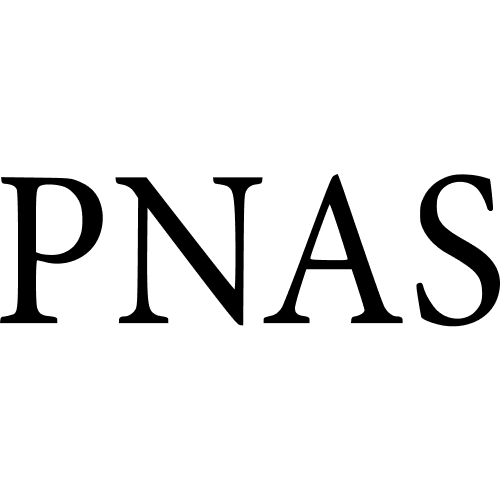
|

Proceedings of the National Academy of Sciences of the United States of America
12 publications, 4%
|
|
RNA
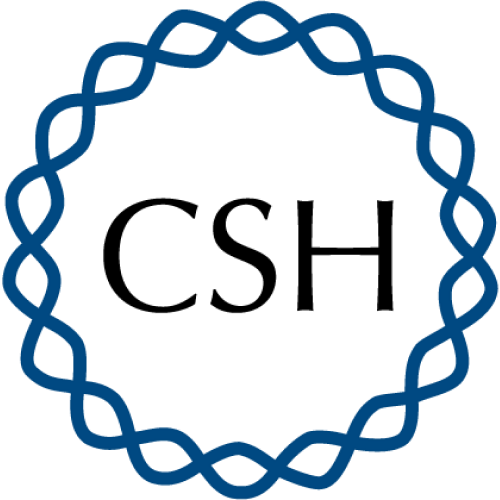
|

RNA
11 publications, 3.67%
|
|
Nature Communications

|

Nature Communications
9 publications, 3%
|
|
Nature Structural and Molecular Biology

|

Nature Structural and Molecular Biology
9 publications, 3%
|
|
Journal of Molecular Biology

|

Journal of Molecular Biology
8 publications, 2.67%
|
|
Current Opinion in Structural Biology

|

Current Opinion in Structural Biology
8 publications, 2.67%
|
|
Biochemistry

|

Biochemistry
6 publications, 2%
|
|
Journal of Biological Chemistry
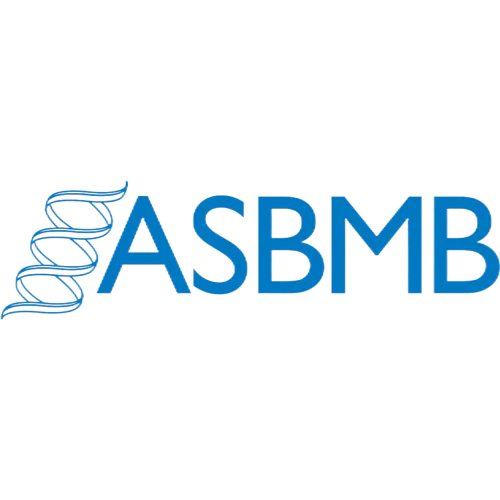
|

Journal of Biological Chemistry
6 publications, 2%
|
|
Nature

|

Nature
5 publications, 1.67%
|
|
Chemistry & Biology

|

Chemistry & Biology
5 publications, 1.67%
|
|
Science

|

Science
5 publications, 1.67%
|
|
Angewandte Chemie

|

Angewandte Chemie
4 publications, 1.33%
|
|
Angewandte Chemie - International Edition

|

Angewandte Chemie - International Edition
4 publications, 1.33%
|
|
EMBO Journal

|

EMBO Journal
4 publications, 1.33%
|
|
Journal of the American Chemical Society

|

Journal of the American Chemical Society
4 publications, 1.33%
|
|
Trends in Biochemical Sciences

|

Trends in Biochemical Sciences
3 publications, 1%
|
|
FEBS Letters

|

FEBS Letters
3 publications, 1%
|
|
eLife
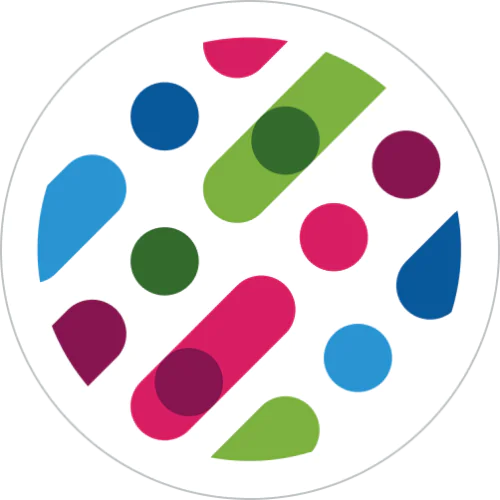
|

eLife
3 publications, 1%
|
|
Annual Review of Biochemistry

|

Annual Review of Biochemistry
3 publications, 1%
|
|
NATO Science for Peace and Security Series A: Chemistry and Biology

|

NATO Science for Peace and Security Series A: Chemistry and Biology
3 publications, 1%
|
|
Journal of Chemical Physics

|

Journal of Chemical Physics
2 publications, 0.67%
|
|
Biochemical Society Transactions

|

Biochemical Society Transactions
2 publications, 0.67%
|
|
Molecules

|

Molecules
2 publications, 0.67%
|
|
Frontiers in Molecular Biosciences

|

Frontiers in Molecular Biosciences
2 publications, 0.67%
|
|
Scientific Reports

|

Scientific Reports
2 publications, 0.67%
|
|
Structure

|

Structure
2 publications, 0.67%
|
|
Cell

|

Cell
2 publications, 0.67%
|
|
2
4
6
8
10
12
14
16
18
|
Citations by publishers
|
10
20
30
40
50
60
|
|
|
Elsevier

|

Elsevier
60 publications, 20%
|
|
Springer Nature

|

Springer Nature
39 publications, 13%
|
|
Wiley

|

Wiley
21 publications, 7%
|
|
Oxford University Press

|

Oxford University Press
20 publications, 6.67%
|
|
American Chemical Society (ACS)

|

American Chemical Society (ACS)
18 publications, 6%
|
|
Cold Spring Harbor Laboratory

|

Cold Spring Harbor Laboratory
15 publications, 5%
|
|
Proceedings of the National Academy of Sciences (PNAS)

|

Proceedings of the National Academy of Sciences (PNAS)
12 publications, 4%
|
|
Annual Reviews

|

Annual Reviews
7 publications, 2.33%
|
|
American Society for Biochemistry and Molecular Biology

|

American Society for Biochemistry and Molecular Biology
6 publications, 2%
|
|
EMBO press

|

EMBO press
6 publications, 2%
|
|
American Association for the Advancement of Science (AAAS)

|

American Association for the Advancement of Science (AAAS)
6 publications, 2%
|
|
American Society for Microbiology

|

American Society for Microbiology
6 publications, 2%
|
|
Taylor & Francis

|

Taylor & Francis
5 publications, 1.67%
|
|
Multidisciplinary Digital Publishing Institute (MDPI)

|

Multidisciplinary Digital Publishing Institute (MDPI)
4 publications, 1.33%
|
|
American Institute of Physics (AIP)

|

American Institute of Physics (AIP)
3 publications, 1%
|
|
The Royal Society

|

The Royal Society
3 publications, 1%
|
|
Pleiades Publishing

|

Pleiades Publishing
3 publications, 1%
|
|
Frontiers Media S.A.

|

Frontiers Media S.A.
3 publications, 1%
|
|
Royal Society of Chemistry (RSC)

|

Royal Society of Chemistry (RSC)
3 publications, 1%
|
|
eLife Sciences Publications

|

eLife Sciences Publications
3 publications, 1%
|
|
Portland Press

|

Portland Press
2 publications, 0.67%
|
|
Public Library of Science (PLoS)
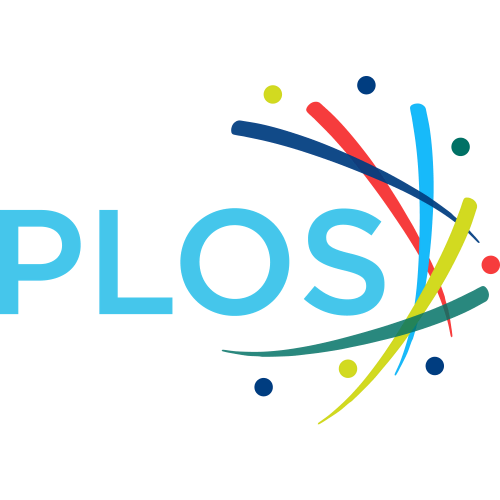
|

Public Library of Science (PLoS)
2 publications, 0.67%
|
|
Beilstein-Institut

|

Beilstein-Institut
1 publication, 0.33%
|
|
The Chemical Society of Japan
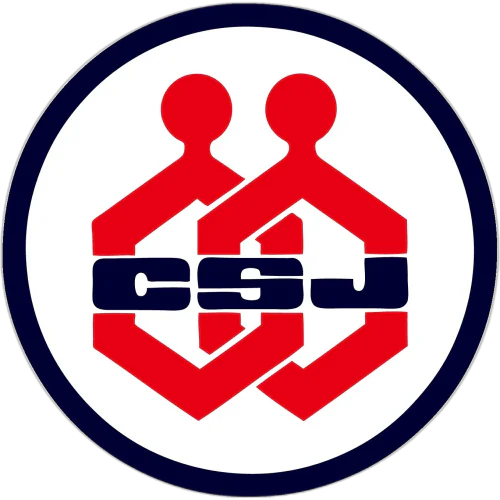
|

The Chemical Society of Japan
1 publication, 0.33%
|
|
Canadian Science Publishing

|

Canadian Science Publishing
1 publication, 0.33%
|
|
Biophysical Society
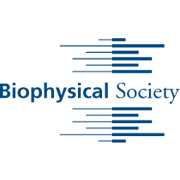
|

Biophysical Society
1 publication, 0.33%
|
|
Cambridge University Press
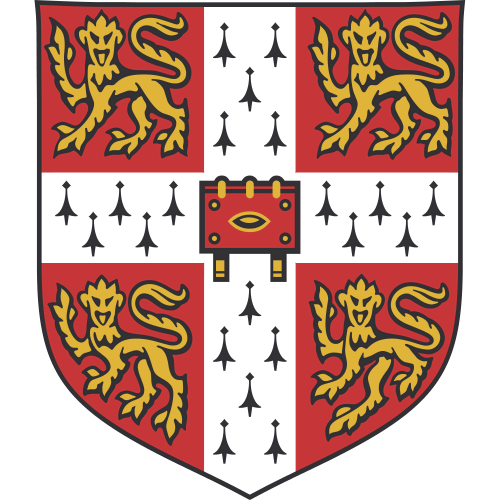
|

Cambridge University Press
1 publication, 0.33%
|
|
Keio Gijuku Daigaku
|
Keio Gijuku Daigaku, 1, 0.33%
Keio Gijuku Daigaku
1 publication, 0.33%
|
|
Walter de Gruyter
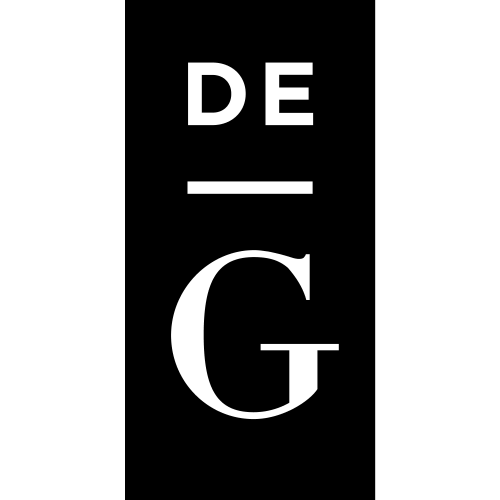
|

Walter de Gruyter
1 publication, 0.33%
|
|
10
20
30
40
50
60
|
- We do not take into account publications that without a DOI.
- Statistics recalculated only for publications connected to researchers, organizations and labs registered on the platform.
- Statistics recalculated weekly.
{"yearsCitations":{"type":"bar","data":{"show":true,"labels":[2006,2007,2008,2009,2010,2011,2012,2013,2014,2015,2016,2017,2018,2019,2020,2021,2022,2023,2024],"ids":[0,0,0,0,0,0,0,0,0,0,0,0,0,0,0,0,0,0,0],"codes":[0,0,0,0,0,0,0,0,0,0,0,0,0,0,0,0,0,0,0],"imageUrls":["","","","","","","","","","","","","","","","","","",""],"datasets":[{"label":"Citations number","data":[11,23,26,22,27,34,12,10,14,17,12,18,7,10,11,20,8,14,4],"backgroundColor":["#3B82F6","#3B82F6","#3B82F6","#3B82F6","#3B82F6","#3B82F6","#3B82F6","#3B82F6","#3B82F6","#3B82F6","#3B82F6","#3B82F6","#3B82F6","#3B82F6","#3B82F6","#3B82F6","#3B82F6","#3B82F6","#3B82F6"],"percentage":["3.67","7.67","8.67","7.33","9","11.33","4","3.33","4.67","5.67","4","6","2.33","3.33","3.67","6.67","2.67","4.67","1.33"],"barThickness":null}]},"options":{"indexAxis":"x","maintainAspectRatio":true,"scales":{"y":{"ticks":{"precision":0,"autoSkip":false,"font":{"family":"Montserrat"},"color":"#000000"}},"x":{"ticks":{"stepSize":1,"precision":0,"font":{"family":"Montserrat"},"color":"#000000"}}},"plugins":{"legend":{"position":"top","labels":{"font":{"family":"Montserrat"},"color":"#000000"}},"title":{"display":true,"text":"Citations per year","font":{"size":24,"family":"Montserrat","weight":600},"color":"#000000"}}}},"journals":{"type":"bar","data":{"show":true,"labels":["Nucleic Acids Research","Molecular Cell","Proceedings of the National Academy of Sciences of the United States of America","RNA","Nature Communications","Nature Structural and Molecular Biology","Journal of Molecular Biology","Current Opinion in Structural Biology","Biochemistry","Journal of Biological Chemistry","Nature","Chemistry & Biology","Science","Angewandte Chemie","Angewandte Chemie - International Edition","EMBO Journal","Journal of the American Chemical Society","Trends in Biochemical Sciences","FEBS Letters","eLife","Annual Review of Biochemistry","NATO Science for Peace and Security Series A: Chemistry and Biology","Journal of Chemical Physics","Biochemical Society Transactions","Molecules","Frontiers in Molecular Biosciences","Scientific Reports","Structure","Cell"],"ids":[23904,19820,306,12892,3231,13408,19701,13702,9964,19451,14611,25570,7711,25450,19215,16016,4813,4668,405,24138,15718,16474,544,10198,1770,3133,13767,5828,16552],"codes":[0,0,0,0,0,0,0,0,0,0,0,0,0,0,0,0,0,0,0,0,0,0,0,0,0,0,0,0,0],"imageUrls":["\/storage\/images\/resized\/yNSijlgQghQF53VZuyFLA30CKDe4j3HK74Vtpnxa_medium.webp","\/storage\/images\/resized\/GDnYOu1UpMMfMMRV6Aqle4H0YLLsraeD9IP9qScG_medium.webp","\/storage\/images\/resized\/mxFdPe9qujsfvfYfcN0QOclAiYORFb0xrRlwV8gs_medium.webp","\/storage\/images\/resized\/hg4jJjT8wVGtHstBCc0zk465Mg9pLx3G4odCDOqE_medium.webp","\/storage\/images\/resized\/voXLqlsvTwv5p3iMQ8Dhs95nqB4AXOG7Taj7G4ra_medium.webp","\/storage\/images\/resized\/voXLqlsvTwv5p3iMQ8Dhs95nqB4AXOG7Taj7G4ra_medium.webp","\/storage\/images\/resized\/GDnYOu1UpMMfMMRV6Aqle4H0YLLsraeD9IP9qScG_medium.webp","\/storage\/images\/resized\/GDnYOu1UpMMfMMRV6Aqle4H0YLLsraeD9IP9qScG_medium.webp","\/storage\/images\/resized\/iLiQsFqFaSEx6chlGQ5fbAwF6VYU3WWa08hkss0g_medium.webp","\/storage\/images\/resized\/OuA6WPZekwEiUM99mP2pSqj4yHPxHezM6xgLhAjO_medium.webp","\/storage\/images\/resized\/voXLqlsvTwv5p3iMQ8Dhs95nqB4AXOG7Taj7G4ra_medium.webp","\/storage\/images\/resized\/GDnYOu1UpMMfMMRV6Aqle4H0YLLsraeD9IP9qScG_medium.webp","\/storage\/images\/resized\/s10mcsCV4OAUg9O2KrqOquQC0PhyLMI8hUUkuflM_medium.webp","\/storage\/images\/resized\/bRyGpdm98BkAUYiK1YFNpl5Z7hPu6Gd87gbIeuG3_medium.webp","\/storage\/images\/resized\/bRyGpdm98BkAUYiK1YFNpl5Z7hPu6Gd87gbIeuG3_medium.webp","\/storage\/images\/resized\/1UiI5HycPsvulDeXOySNp0OuaMMmIKfPnsdKPyH0_medium.webp","\/storage\/images\/resized\/iLiQsFqFaSEx6chlGQ5fbAwF6VYU3WWa08hkss0g_medium.webp","\/storage\/images\/resized\/GDnYOu1UpMMfMMRV6Aqle4H0YLLsraeD9IP9qScG_medium.webp","\/storage\/images\/resized\/bRyGpdm98BkAUYiK1YFNpl5Z7hPu6Gd87gbIeuG3_medium.webp","\/storage\/images\/resized\/eIZgkq1MRZyJ3hBkdupnUUv7wgB6zCl9D99SlPN5_medium.webp","\/storage\/images\/resized\/A7oGMwx1m3fFJlKJvQUVra8h0itmEa7JZW0q3Q0b_medium.webp","\/storage\/images\/resized\/voXLqlsvTwv5p3iMQ8Dhs95nqB4AXOG7Taj7G4ra_medium.webp","\/storage\/images\/resized\/ARM4e6URKRsbRZvIF0vFis9DjxGloBjnBYJXbHmZ_medium.webp","\/storage\/images\/resized\/nUqNrP9GnM1t0BrAIXp1LBodjU8aIJ2Fk4pLfGhZ_medium.webp","\/storage\/images\/resized\/MjH1ITP7lMYGxeqUZfkt2BnVLgjkk413jwBV97XX_medium.webp","\/storage\/images\/resized\/4QWA67eqfcfyOiA8Wk7YnqroHFqQbTsmDJUYTCTg_medium.webp","\/storage\/images\/resized\/voXLqlsvTwv5p3iMQ8Dhs95nqB4AXOG7Taj7G4ra_medium.webp","\/storage\/images\/resized\/GDnYOu1UpMMfMMRV6Aqle4H0YLLsraeD9IP9qScG_medium.webp","\/storage\/images\/resized\/GDnYOu1UpMMfMMRV6Aqle4H0YLLsraeD9IP9qScG_medium.webp"],"datasets":[{"label":"","data":[18,13,12,11,9,9,8,8,6,6,5,5,5,4,4,4,4,3,3,3,3,3,2,2,2,2,2,2,2],"backgroundColor":["#3B82F6","#3B82F6","#3B82F6","#3B82F6","#3B82F6","#3B82F6","#3B82F6","#3B82F6","#3B82F6","#3B82F6","#3B82F6","#3B82F6","#3B82F6","#3B82F6","#3B82F6","#3B82F6","#3B82F6","#3B82F6","#3B82F6","#3B82F6","#3B82F6","#3B82F6","#3B82F6","#3B82F6","#3B82F6","#3B82F6","#3B82F6","#3B82F6","#3B82F6"],"percentage":[6,4.33,4,3.67,3,3,2.67,2.67,2,2,1.67,1.67,1.67,1.33,1.33,1.33,1.33,1,1,1,1,1,0.67,0.67,0.67,0.67,0.67,0.67,0.67],"barThickness":13}]},"options":{"indexAxis":"y","maintainAspectRatio":false,"scales":{"y":{"ticks":{"precision":0,"autoSkip":false,"font":{"family":"Montserrat"},"color":"#000000"}},"x":{"ticks":{"stepSize":null,"precision":0,"font":{"family":"Montserrat"},"color":"#000000"}}},"plugins":{"legend":{"position":"top","labels":{"font":{"family":"Montserrat"},"color":"#000000"}},"title":{"display":true,"text":"Journals","font":{"size":24,"family":"Montserrat","weight":600},"color":"#000000"}}}},"publishers":{"type":"bar","data":{"show":true,"labels":["Elsevier","Springer Nature","Wiley","Oxford University Press","American Chemical Society (ACS)","Cold Spring Harbor Laboratory","Proceedings of the National Academy of Sciences (PNAS)","Annual Reviews","American Society for Biochemistry and Molecular Biology","EMBO press","American Association for the Advancement of Science (AAAS)","American Society for Microbiology","Taylor & Francis","Multidisciplinary Digital Publishing Institute (MDPI)","American Institute of Physics (AIP)","The Royal Society","Pleiades Publishing","Frontiers Media S.A.","Royal Society of Chemistry (RSC)","eLife Sciences Publications","Portland Press","Public Library of Science (PLoS)","Beilstein-Institut","The Chemical Society of Japan","Canadian Science Publishing","Biophysical Society","Cambridge University Press","Keio Gijuku Daigaku","Walter de Gruyter"],"ids":[17,8,11,19,40,6909,162,6941,2090,9415,189,142,18,202,250,259,101,208,123,6627,801,344,6139,6950,6942,1454,1,3805,4],"codes":[0,0,0,0,0,0,0,0,0,0,0,0,0,0,0,0,0,0,0,0,0,0,0,0,0,0,0,0,0],"imageUrls":["\/storage\/images\/resized\/GDnYOu1UpMMfMMRV6Aqle4H0YLLsraeD9IP9qScG_medium.webp","\/storage\/images\/resized\/voXLqlsvTwv5p3iMQ8Dhs95nqB4AXOG7Taj7G4ra_medium.webp","\/storage\/images\/resized\/bRyGpdm98BkAUYiK1YFNpl5Z7hPu6Gd87gbIeuG3_medium.webp","\/storage\/images\/resized\/yNSijlgQghQF53VZuyFLA30CKDe4j3HK74Vtpnxa_medium.webp","\/storage\/images\/resized\/iLiQsFqFaSEx6chlGQ5fbAwF6VYU3WWa08hkss0g_medium.webp","\/storage\/images\/resized\/hg4jJjT8wVGtHstBCc0zk465Mg9pLx3G4odCDOqE_medium.webp","\/storage\/images\/resized\/mxFdPe9qujsfvfYfcN0QOclAiYORFb0xrRlwV8gs_medium.webp","\/storage\/images\/resized\/A7oGMwx1m3fFJlKJvQUVra8h0itmEa7JZW0q3Q0b_medium.webp","\/storage\/images\/resized\/OuA6WPZekwEiUM99mP2pSqj4yHPxHezM6xgLhAjO_medium.webp","\/storage\/images\/resized\/1UiI5HycPsvulDeXOySNp0OuaMMmIKfPnsdKPyH0_medium.webp","\/storage\/images\/resized\/s10mcsCV4OAUg9O2KrqOquQC0PhyLMI8hUUkuflM_medium.webp","\/storage\/images\/resized\/VPE7q24PXoHr5SS2SqfEgxccSMUxWLfZINOX60uo_medium.webp","\/storage\/images\/resized\/5YZtvLvkPZuc2JHOaZsjCvGSHFCuC3drUwN3YAc5_medium.webp","\/storage\/images\/resized\/MjH1ITP7lMYGxeqUZfkt2BnVLgjkk413jwBV97XX_medium.webp","\/storage\/images\/resized\/ARM4e6URKRsbRZvIF0vFis9DjxGloBjnBYJXbHmZ_medium.webp","\/storage\/images\/resized\/BHBStD1OkQqtKFRRjS5njgNe7bXCAEgaDQVK7GTA_medium.webp","\/storage\/images\/resized\/oZgeErrVFhuDksyqFURLvYS1wtVSBWczh001igGo_medium.webp","\/storage\/images\/resized\/4QWA67eqfcfyOiA8Wk7YnqroHFqQbTsmDJUYTCTg_medium.webp","\/storage\/images\/resized\/leiAYcRDGTSl5B1eCnwpSGqmDEUEfDPPoYisFGhT_medium.webp","\/storage\/images\/resized\/eIZgkq1MRZyJ3hBkdupnUUv7wgB6zCl9D99SlPN5_medium.webp","\/storage\/images\/resized\/nUqNrP9GnM1t0BrAIXp1LBodjU8aIJ2Fk4pLfGhZ_medium.webp","\/storage\/images\/resized\/PRGhlgB4OKRltSNtT39eA6wlnOTGRap1QQ6FQHih_medium.webp","\/storage\/images\/resized\/ex6KJoZujZOZFZh7jGfeHauiftuB3CI7iwJVFRDg_medium.webp","\/storage\/images\/resized\/ktSZPrGjOMvauY6mn7jk8bqo3Af0S6abv653w90B_medium.webp","\/storage\/images\/resized\/qZfu8vVyaDIo81Au73p6SNE8AGGzf73yfiTC33bu_medium.webp","\/storage\/images\/resized\/Bmz9XNb2QDptmPTa5N8huM54tShVewUj8fZqKFRy_medium.webp","\/storage\/images\/resized\/cF81zWlLdkmYekymGuDcSdvgBGNKaIDoMoeJtHS1_medium.webp","","\/storage\/images\/resized\/3SpVxcYL33bOvPq4sHxJLH2NeKNeDloahSUpNiO4_medium.webp"],"datasets":[{"label":"","data":[60,39,21,20,18,15,12,7,6,6,6,6,5,4,3,3,3,3,3,3,2,2,1,1,1,1,1,1,1],"backgroundColor":["#3B82F6","#3B82F6","#3B82F6","#3B82F6","#3B82F6","#3B82F6","#3B82F6","#3B82F6","#3B82F6","#3B82F6","#3B82F6","#3B82F6","#3B82F6","#3B82F6","#3B82F6","#3B82F6","#3B82F6","#3B82F6","#3B82F6","#3B82F6","#3B82F6","#3B82F6","#3B82F6","#3B82F6","#3B82F6","#3B82F6","#3B82F6","#3B82F6","#3B82F6"],"percentage":[20,13,7,6.67,6,5,4,2.33,2,2,2,2,1.67,1.33,1,1,1,1,1,1,0.67,0.67,0.33,0.33,0.33,0.33,0.33,0.33,0.33],"barThickness":13}]},"options":{"indexAxis":"y","maintainAspectRatio":false,"scales":{"y":{"ticks":{"precision":0,"autoSkip":false,"font":{"family":"Montserrat"},"color":"#000000"}},"x":{"ticks":{"stepSize":null,"precision":0,"font":{"family":"Montserrat"},"color":"#000000"}}},"plugins":{"legend":{"position":"top","labels":{"font":{"family":"Montserrat"},"color":"#000000"}},"title":{"display":true,"text":"Publishers","font":{"size":24,"family":"Montserrat","weight":600},"color":"#000000"}}}}}
Metrics
Cite this
GOST |
RIS |
BibTex |
MLA
Cite this
GOST
Copy
Martin Schmeing T. et al. An induced-fit mechanism to promote peptide bond formation and exclude hydrolysis of peptidyl-tRNA // Nature. 2005. Vol. 438. No. 7067. pp. 520-524.
GOST all authors (up to 50)
Copy
Martin Schmeing T., Huang K. S., Strobel S. A., Steitz T. A. An induced-fit mechanism to promote peptide bond formation and exclude hydrolysis of peptidyl-tRNA // Nature. 2005. Vol. 438. No. 7067. pp. 520-524.
Cite this
RIS
Copy
TY - JOUR
DO - 10.1038/nature04152
UR - https://doi.org/10.1038%2Fnature04152
TI - An induced-fit mechanism to promote peptide bond formation and exclude hydrolysis of peptidyl-tRNA
T2 - Nature
AU - Martin Schmeing, T
AU - Huang, Kevin S
AU - Strobel, Scott A.
AU - Steitz, Thomas A.
PY - 2005
DA - 2005/11/24 00:00:00
PB - Springer Nature
SP - 520-524
IS - 7067
VL - 438
SN - 0028-0836
SN - 1476-4687
ER -
Cite this
BibTex
Copy
@article{2005_Martin Schmeing,
author = {T Martin Schmeing and Kevin S Huang and Scott A. Strobel and Thomas A. Steitz},
title = {An induced-fit mechanism to promote peptide bond formation and exclude hydrolysis of peptidyl-tRNA},
journal = {Nature},
year = {2005},
volume = {438},
publisher = {Springer Nature},
month = {nov},
url = {https://doi.org/10.1038%2Fnature04152},
number = {7067},
pages = {520--524},
doi = {10.1038/nature04152}
}
Cite this
MLA
Copy
Martin Schmeing, T., et al. “An induced-fit mechanism to promote peptide bond formation and exclude hydrolysis of peptidyl-tRNA.” Nature, vol. 438, no. 7067, Nov. 2005, pp. 520-524. https://doi.org/10.1038%2Fnature04152.
